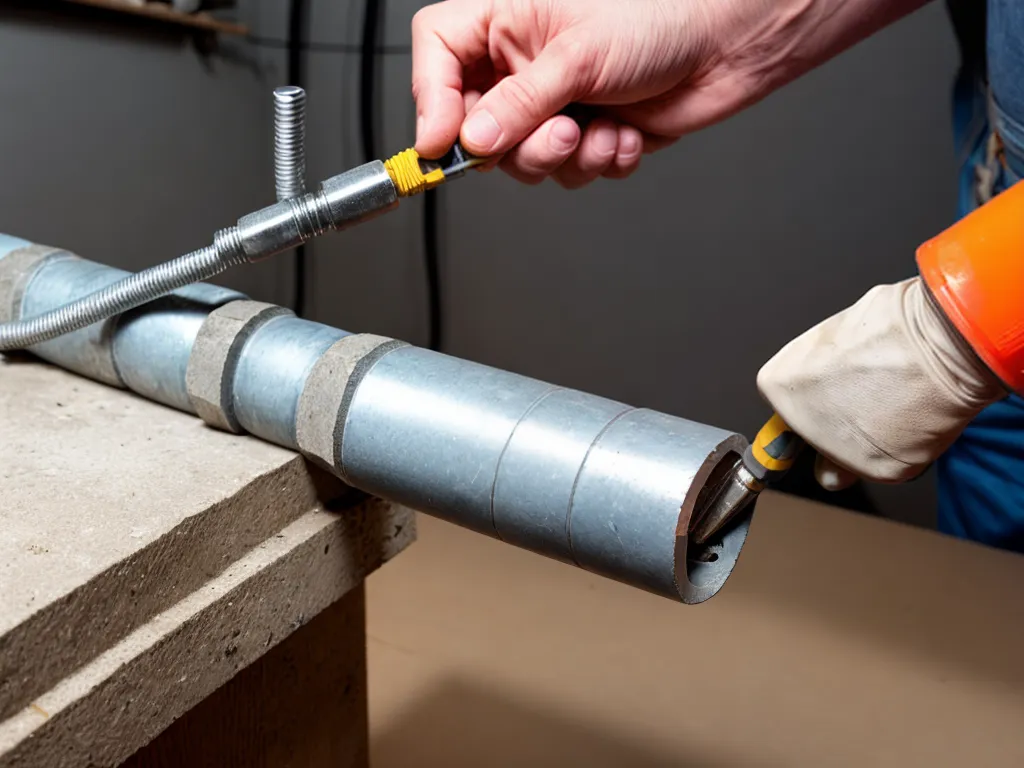
Bending conduit is an essential skill for electricians, but it can be tricky to do correctly without damaging the wires inside. This guide will teach you the proper techniques and tools to safely bend conduit without kinking or breaking the wires.
Understanding Conduit and Wiring
Conduit is a hollow tube made of metal or plastic that protects and routes electrical wiring. The most common types used are:
- EMT (Electrical Metallic Tubing) - thin-walled steel, flexible and strong
- Rigid Metal Conduit - thick-walled, threaded steel, provides most protection
- PVC (Polyvinyl Chloride) - plastic, lightweight but less durable
Inside the conduit are insulated wires that carry electrical current. Bending the conduit too sharply can kink the wires or damage their insulation. The goal is to bend the conduit smoothly without exceeding the minimum bend radius of the wires inside.
Choosing the Right Bender
To avoid wire damage, use the proper size conduit bender for the conduit type and diameter you are working with. The bender forms uniform curves by constraining the conduit to the bender's fixed radius.
Common types of conduit benders include:
- Hand benders - lightweight with bend dies for 1/2" and 3/4" EMT conduit
- Hydraulic benders - use hydraulic pistons for larger bend radii
- Shoe benders - sit on the ground for stability with large conduit
Match the bender size to the conduit size so the bend radius does not kink the wires. The bender Instructions list the compatible conduit sizes.
Determining Minimum Bend Radius
The minimum bend radius varies based on the wire type, insulation, and conduit size. Consult the electrical code or manufacturer specs to determine the minimum bend radius.
As a general guideline for THHN insulated building wire in EMT conduit:
- 1/2" conduit - 6 inch minimum bend radius
- 3/4" conduit - 8 inch minimum bend radius
- 1" conduit - 12 inch minimum bend radius
Exceeding the minimum bend radius prevents wire damage. Staying above the minimum also allows wires to be pulled easier through the conduit.
Bending Conduit Safely
Follow these steps to safely bend conduit at the proper radius:
-
Mark the bend location - Mark the conduit where you want the center of the bend.
-
Insert conduit in bender - Line up the marked center point with the bender's center axis.
-
Secure conduit in bender - Lock the back bend die and front clamp onto the conduit to hold it steady.
-
Check bend direction - Conduit needs to curve gently where wires enter and exit boxes. Plan the bend direction.
-
Bend to measured degree - Slowly bend the conduit to the desired angle marked on the bender.
-
Avoid deforming conduit - Apply pressure gradually and evenly to form a smooth uniform curve.
-
Check for flat spots - Flat spots indicate the conduit was crushed too tightly. Redo the bend if needed.
-
Avoid kinking conduit - Kinks form sharp corners that can damage wire insulation. Keep the radius wide.
Following these guidelines will produce smooth bends that maintain the internal diameter of the conduit and prevent wire damage. With practice, bending conduit will become fast and easy.
Bending Conduit Without a Bender
In some cases conduit needs to be bent without a bending tool. This can be done by hand or by wrapping the conduit around a circular object with a diameter equal to the minimum bend radius.
To hand bend smaller EMT conduit:
- Mark the bend location and direction
- Hold the conduit securely on both sides of the bend
- Slowly bring your hands together to bend the conduit evenly
Larger diameter conduit can be bent around a circular frame or barrel:
- Build or find a round frame equal to the minimum bend diameter
- Mark the center of the bend on the conduit
- Slowly bend the conduit over the frame until you achieve the desired angle
Without a bender, work slowly and check frequently to avoid kinks. The bend will not be as smooth and uniform.
Avoiding Common Bending Mistakes
Bending conduit correctly takes practice. Watch out for these common mistakes:
- Exceeding the minimum bend radius
- Forming kinks instead of smooth bends
- Crushing or deforming the conduit
- Bending in the wrong direction or location
Go slowly, use the proper size bender, and double check your measurements. It is better to toss out a badly deformed conduit and start fresh rather than risk damaging wires.
With the techniques outlined above, you can gain confidence bending all types of conduit to create professional looking installations. Smooth bends done safely will allow wires to pass through easily while fully protecting them within the conduit.